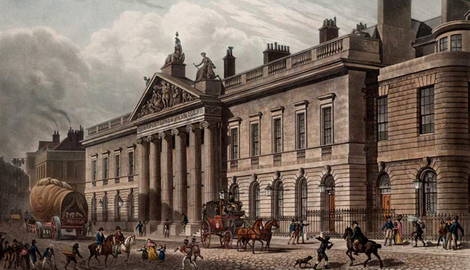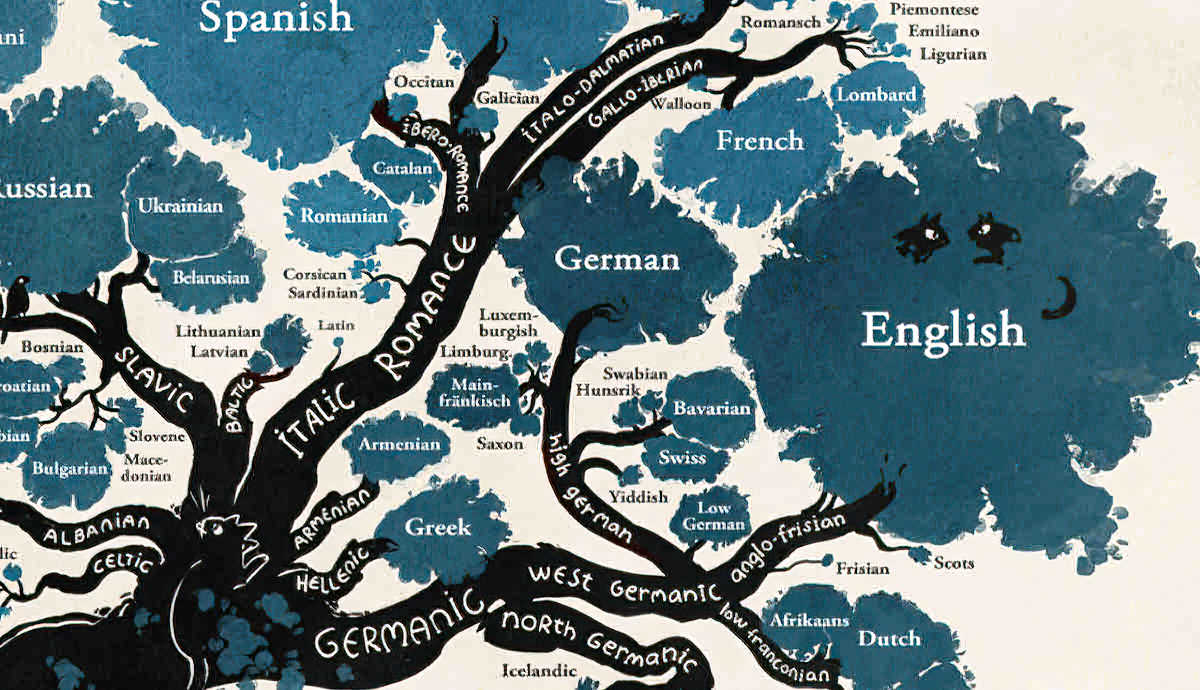
Blessed with the authority of conducting and protecting itself in the name of the Crown, the British East India Company had amassed wealth previously unimaginable. Its monopoly of the Asian and the Pacific Trade generated vast profits for London, culminating in the influx of lucrative commodities like tea and spices. But exactly how and when did a chartered company go beyond just the conduct of business and begin exerting political influence at the same time? What does it mean for its employees, its patrons, as well as the empire? This article explores the British East India Company’s meteoric rise and fall in detail. It will also shed light on how the Company’s eventual control over India from the 18th century blurred the lines between its commercial and territorial nature.
How the British East India Company Came to Be

It all started on the last day of the year 1600. British monarch Queen Elizabeth I granted a charter in what would be an unprecedented privilege to a group of London merchants. The historic charter bestowed exclusive overseas trading rights with the East Indies on these men who would form the British East India Company. This privilege accounted for a massive land area stretching eastwards from the Cape of Good Hope in South Africa to Cape Horn in South America. What this fundamentally meant was that the British East India Company would be able to exert considerable influence over the Asian and Pacific Trade.

Further cementing British seafaring prowess, the state-sanctioned charter came after the British had defeated the Spanish Armada in the most epic and dramatic manner. In the summer of 1588, the Spanish Armada which commanded 130 ships consisting of some 8,000 seamen and 18,000 soldiers, was preparing to invade England. The result of years of Anglo-Spanish tensions, the naval face-off was originally tipped in favor of the Spanish forces who had outnumbered their English counterparts. However, an ingenious plan to send blazing English ships toward the Spanish Armada later forced the Spaniards to flee in chaos and panic. A combination of bad weather and not-so-strategic naval engagements culminated in the defeat of the almighty Spanish Armada. It had lost 60 of its 130 ships and reported some 15,000 deaths by autumn.
In what was considered a spectacular military victory, the defeat of the Spanish Armada had without a doubt boosted Britain’s foray into the seas. Like the Dutch and the Portuguese, the British had desired to set sail to the East Indies and exploit the vast resources nestled within these land masses. In India, China, as well as Persia, and beyond laid precious spices, textiles, jewelry, and tea widely sought after by the western powers. The ongoing European rivalry, as well as competition for control over these regions, would thrust the British East India Company into a chaotic period characterized by power struggle, exploitation, and violence.
The Key “Factor” to Success: A Factory System

The British East India Company functioned primarily based on a “factory” system. Designated representatives or “factors” were tasked to set up trading posts to source and negotiate with the locals. These factors would usually be liaising with local merchants to take stock of the voyage for the current and following year. While employment with the British East India Company was as coveted as having secured a position in Google today, there were many risks involved. Particularly for those sent abroad, one sea expedition could easily take two years and potentially end in tragedy for many. It was estimated that over half of the British East India Company’s employees sent to Asia had lost their lives while in service. The high mortality rates were usually a result of storms, shipwrecks, piracy, and diseases among others.
Back in London, a central administration oversaw the massive mercantile machine. Responsible for the timely reporting of the British East India Company’s operations, the Court of Directors consisted of 24 elected members and designated committees. The Court was also in charge of sending political, administrative, and commercial instructions to councils set up in the major trading settlements overseas. With a systematic, highly efficient workflow, the British East India Company was able to capitalize on the advantageous monopoly it had over the East Indies and consistently reap handsome profits.
The Obstacles: Escalating Tensions with Competing Powers

An efficient system laid the foundations for the British East India Company’s maritime ventures abroad. However, the emerging maritime power soon found itself battling the increasing influences of its European competitors. Just two years after the Company’s formation, they were met with the news of the birth of the Dutch East India Company which was also granted a monopoly over the Asian trade by the Dutch government. The Dutch East India Company wasted no time demonstrating its prowess and asserting its dominance over Asian waters. In February 1603, it seized Santa Catarina, a well-laden Portuguese merchant ship off the coast of Singapore, effectively gaining leverage over the Iberian power. In the same year, it also established a permanent trading post in Banten, modern-day Indonesia.
As tensions between the two competing Companies rose, it escalated into an open naval conflict in 1618. This culminated in a series of military entanglements later between the two empires from 1652 to 1673, which would later extend into the 18th century. Among other motivations for warfare was Britain’s desire to seize the spice trade in Asia which had always been a Dutch stronghold. But when it became clear that Dutch dominance in the region was unsurpassable, the British reconfigured their game plan, looking to India and China instead.
The Opportunity: Securing the “India” in the East India Company

For the British, India was a good option to establish dominance for a variety of reasons. First, it provided commodities that were comparable to the lucrative spice trade, such as indigo, cotton, tea, and exotic animals. This was connected to the thriving demand for Indian textiles in the Euro-Asian trade. Secondly, it functioned as a viable access point where the trading communities could converge. It was also a strategic port for stopover, restocking, and shelter. Finally, and more importantly, India presented itself as a promising location to project English dominance to counter the other European powers in the region.

Britain’s initial forays in India began with establishing agreements with the Mughal Empire. As the latter expressed interest in enhancing trade and was relatively open to foreign cultures, the British East India Company could kick-start its commercial activities in India. It all began with the first Company factory being constructed in Surat, then the most prosperous port in India, in 1612. This was followed by the establishment of several fortified settlements in various parts of India such as Madras, Calcutta, and Bombay. As garrisons and residences of the officials and soldiers sprouted quickly in these settlements, they soon became a microcosm of the British East India Company.
Expansion of British East India Company in India

As it progressed into the 18th century, the British East India Company began to expand its control over India, owing to a variety of factors. First, the Mughal Empire was declining due to its increasingly decentralized system. A network of complex marriage alliances created a highly volatile political climate with numerous princely states. Due to their “virtual autonomy” from central authority, the leaders of the princely states like Bengal and Hyderabad began forging their own agreements with foreigners. By the 1750s, the Mughal Empire was confronted with the reality of its own decline. It faced the dual threats of the emerging social classes such as zamindars (landowners) and powerful merchants, as well as the Hindu Marathas, a warrior group from the western Deccan Plateau (present-day Maharashtra).
Secondly, the British East India Company was consolidating its power in India through the expansion of its trade networks. Apart from the growth of its fortified settlements, the Company was wielding much influence through local traders and credit systems. At the height of its power, it could even loan money to the state. Similarly, its burgeoning army was also posing a threat to the Mughal rule. Originally meant to protect the factories and defend British commercial interests from other European powers, the British East India Company’s army was commanding over 48,000 men by 1783. At its height, it was 260,000-strong, almost twice that of Britain’s standing armed forces.
The Turning Point: The Battle of Plassey, 1757

As the winds of change beckoned the British East India Company to have a more direct stake in India, a major turning point that would transform it into an empire occurred in 1757. Widely regarded as the start of over two centuries of British rule in India, the Battle of Plassey took place in June 1757. A military confrontation that took place in north-eastern India pitted the Company’s troops, led by Colonel Robert Clive against the forces of Siraj-ud-Daulah, the last Nawab (sovereign ruler) of Bengal, and his French allies. While the former had 3,000 men and the latter a whopping 50,000, it was a decisive victory for Robert Clive and the British East India Company.
Later, it was revealed that the victory was a result of a backroom deal with Indian bankers to convince the bulk of the Indian army not to fight at Plassey. Nonetheless, the victory greatly boosted the Company’s powers and influence in India, as it secured broad taxation powers in Bengal, one of India’s richest provinces. Capitalizing on the success at Plassey, the Company went on to annex other parts of the subcontinent using force. It also established key alliances with rulers of regions that it had difficulty conquering.
The Crown and the Company: Consolidating Power

Despite the civil strife and unrest at home, the Asian trade became a matter of national importance for the British empire by the mid-17th century. As the British East India Company was managing a colossal amount of trade and budget, the British government back in London had to intervene on multiple occasions to put the Company into accountability. In 1784, the historic India Act was passed in the British Parliament which formalized the state involvement in governing the Company’s land holdings in India. Widely regarded as the moment “the proper British empire took hold,” a government-appointed Board of Control kept the Company in check.

Between the 1780s to the 1840s, the British East India Company’s engines of expansion knew no limits. Under the stewardship of several key “men on the spot” like Richard Wellesley and Warren Hastings, the Company’s mission hinged on pro-expansionist tendencies. It also subscribed to the belief of paramountcy where commercial interests surpassed everything else. This saw the hardening of attitudes toward Indian states, culminating in several border conflicts and increasingly forceful annexations of territories.
The Decline and End of the British East India Company

By the start of the 19th century, there had been increasing concerns over the Company’s monopoly against the emerging ideas of Free Trade. In 1813, a Charter Act was passed which resulted in the loss of the Indian monopoly for the Company as agency houses and traders scurried to capitalize on the winds of change. With public sentiments questioning the value of a chartered Company, returning Company men were also regarded as a public nuisance due to their reputations of greed.
It would take another Charter Act in 1833 to put the Monopoly vs. Free Trade argument to rest as the Parliament proceeded to wind up the Company. While the Company retained its symbolic imperial role until 1858, it was officially dissolved in June 1874, and with it, over two centuries of glory and monumental milestones. Once a source of pride for the British Empire, the last days of the British East India Company were abysmal, to say the least. Be that as it may, its unprecedented scale and influence at the height of its power bear key lessons for many multinational conglomerates of today’s global economy.










